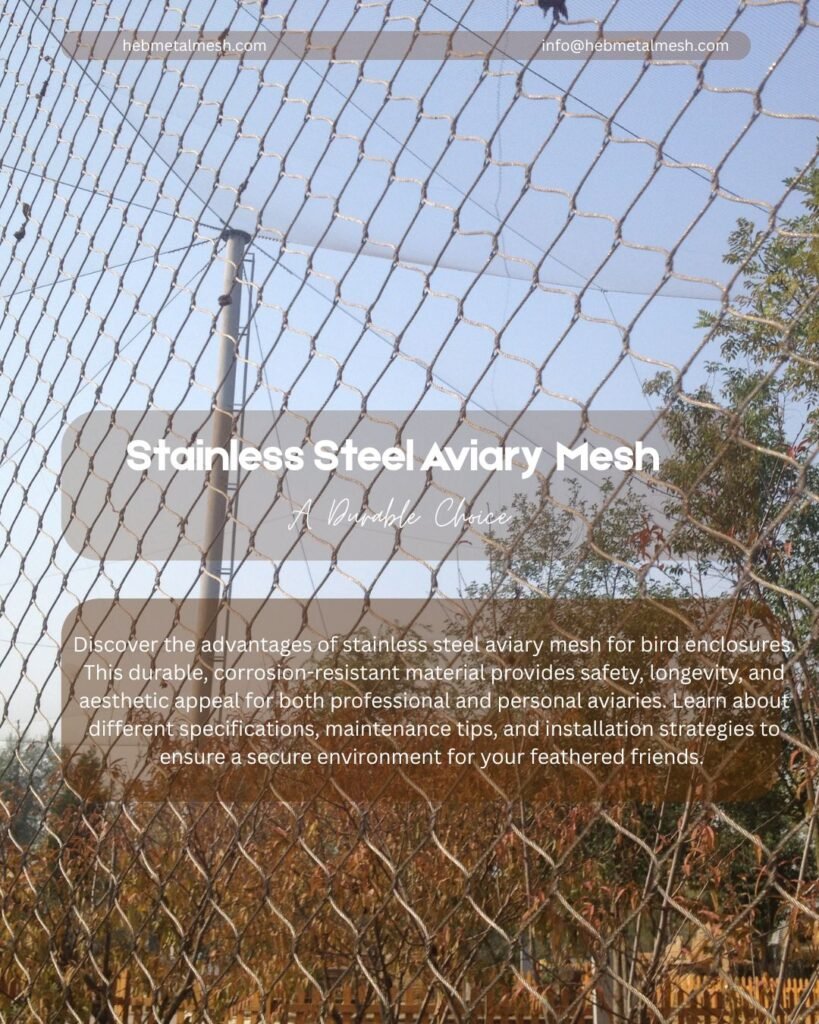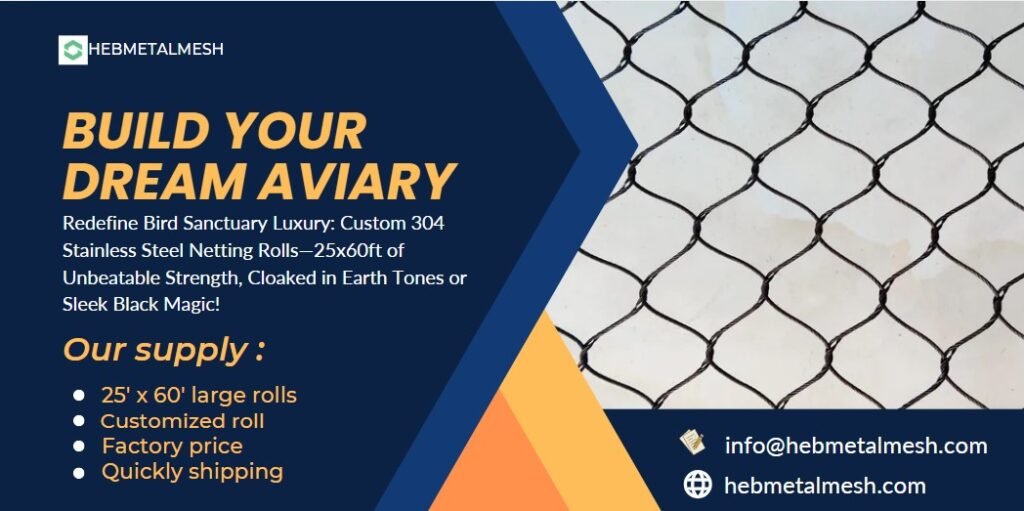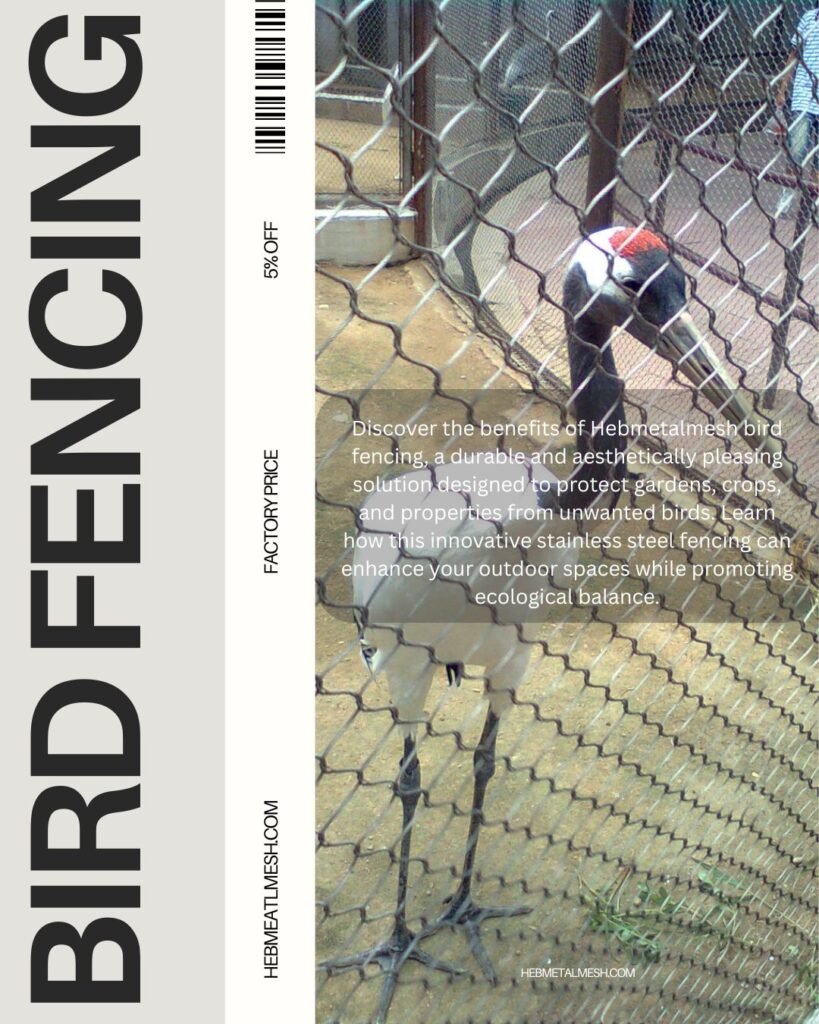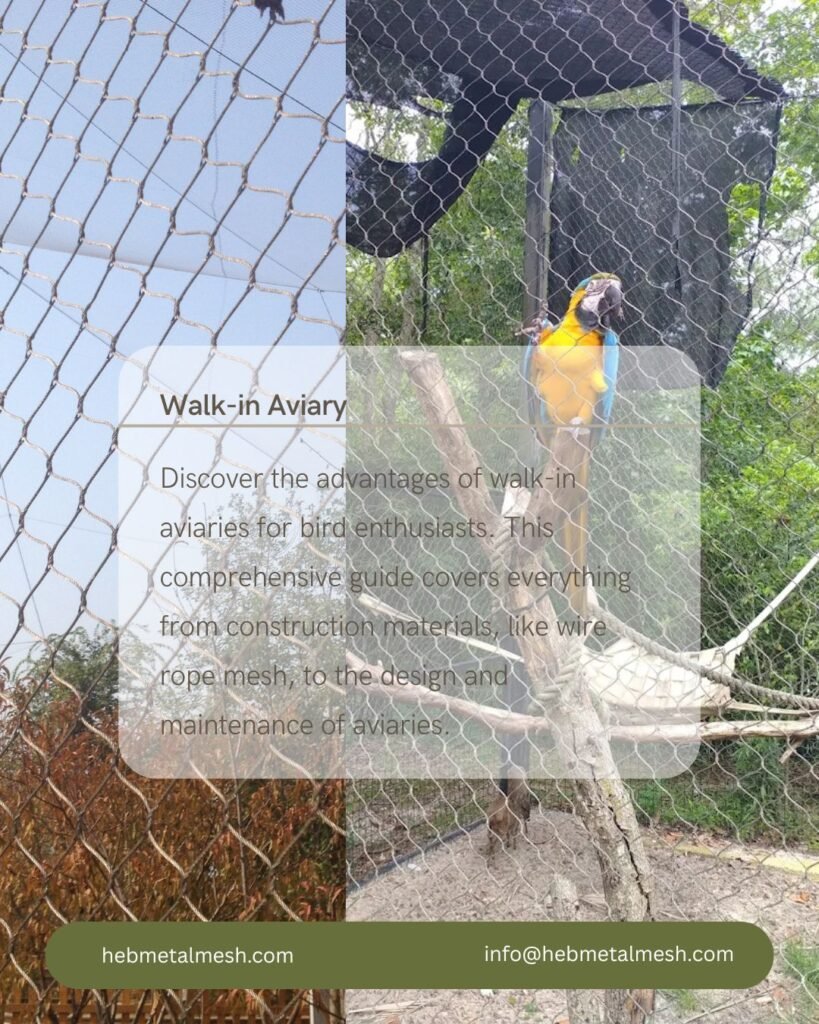Introduction to Walk-In Aviaries
Walk-in aviaries are spacious enclosures designed to provide an environment that mimics the natural habitat of birds. These structures allow bird enthusiasts to engage with their feathered companions in a more immersive and interactive manner. Unlike traditional cages, which can often feel confining, walk-in aviaries promote freedom of movement, enabling birds to fly, perch, and explore within a secure space. This not only enhances their physical well-being but also contributes to their mental stimulation, which is essential for a healthy and happy life.
The primary purpose of constructing a walk-in aviary is to offer a safe haven for various species of birds, whether kept as pets or for conservation efforts. Aviaries serve as sanctuaries where birds can be observed in an environment that resembles their natural surroundings, complete with plants, branches, and other elements that encourage natural behaviors such as foraging and nesting. For bird owners, these structures provide an opportunity to enjoy the beauty and diversity of avian life up close, creating a unique blend of leisure and education.
Moreover, walk-in aviaries offer numerous benefits for both birds and their caretakers. They promote social interaction among birds, reducing stress levels often associated with isolation in smaller cages. The spacious design also allows owners to create a more aesthetically pleasing landscape that can be tailored to individual tastes, providing both birds and observers with an inviting atmosphere. Ultimately, building a walk-in aviary transcends the mere act of housing birds; it fosters a deeper connection between the owner and their pets, enriching the lives of all involved.
The Importance of Material in Aviary Construction
Creating a walk-in aviary requires careful consideration of various factors, and one of the most critical aspects is material selection. The choice of materials directly impacts the integrity, safety, and aesthetic appeal of the aviary. Aviaries are outdoor structures designed to house birds in a safe and secure environment, and the materials used should provide durability against harsh weather conditions and potential predator threats. Selecting the right material can mean the difference between a successful aviary and one that falls short of its purpose.
Durability is paramount when constructing a walk-in aviary, as the structure must withstand exposure to elements such as rain, wind, and sunlight. Materials that degrade easily can compromise the safety of the birds housed within. Furthermore, the chosen materials must be non-toxic and safe for the birds, ensuring that their health is not jeopardized. The long lifespan of the materials also translates into cost-effectiveness over time, reducing the need for frequent repairs or replacements.
Aesthetics also play an essential role in the overall design of an aviary. A well-designed walk-in aviary should blend seamlessly into its surrounding landscape while providing adequate visibility for observation. The right materials can offer both functionality and beauty, enhancing the experience for both the birds and the observers. Wire rope mesh, for example, presents a stylish and effective alternative to traditional aviary materials, offering clarity and a modern aesthetic while ensuring safety and security. The flexibility and strength of wire cage mesh make it particularly suitable for creating expansive walk-in aviaries that can accommodate various bird species without restrictive barriers.
In summary, the choice of material is a foundational aspect of aviary construction that influences durability, safety, and aesthetics. With the right materials, builders can create functional and beautiful environments tailored to the needs of the birds they aim to protect.

What is Wire Rope Mesh?
Wire rope mesh, often referred to as wire mesh or wire rope netting, is a specialized material made from stainless steel wire strands that are woven or braided together to form a flexible and durable grid-like structure. This innovative material combines high tensile strength with remarkable versatility, making it an ideal choice for a variety of applications, including the construction of walk-in aviaries. The wire rods are typically treated to resist corrosion, thus enhancing their longevity and making them suitable for outdoor environments.
The composition of wire rope mesh generally consists of multiple wires that are arranged in a crisscross pattern, providing a robust construction capable of withstanding various weather conditions. The openings in the mesh can vary in size, allowing for optimal visibility while ensuring the safety of birds housed within the structure. This unique design not only facilitates proper airflow and natural light penetration but also prevents predators from infiltrating the aviary, thus offering peace of mind to aviculturists and bird enthusiasts alike.
Wire rope mesh is increasingly popular in the design of walk-in aviaries due to its lightweight nature and easy installation process. Unlike traditional solid materials, wire mesh does not obstruct the view, thereby providing an unobstructed observation experience for bird watchers. Moreover, its flexibility allows for the creation of custom shapes and sizes to suit individual aviary designs. The mesh can be easily shaped to accommodate different architectural requirements, further solidifying its status as a go-to choice for aviary builders.
In addition to its functional aspects, wire rope mesh offers aesthetic benefits, enhancing the overall appearance of the walk-in aviary. It can be incorporated into various design styles, from rustic to modern, without compromising on structural integrity. As a result, the combination of functionality and design makes wire rope mesh an indispensable component in contemporary aviary construction.
Strength and Durability of Wire Rope Mesh
When selecting materials for a walk-in aviary, strength and durability are paramount considerations. Wire rope mesh has emerged as a leading choice among aviary builders due to its exceptional resilience. Engineered from high-tensile steel wires, the mesh can withstand considerable tension, making it highly effective in supporting larger structures. This strength is vital for providing a safe and secure environment for birds, ensuring they are protected from external threats and harsh weather conditions.
One significant advantage of wire rope mesh is its ability to endure extreme weather, including heavy snow, persistent rain, and strong winds. Unlike traditional aviary materials such as wood or plastic, which may warp, rot, or become brittle over time, wire rope mesh retains its structural integrity, even under significant stress. For instance, in regions prone to severe storms, conventional mesh types may fail, whereas wire rope mesh continues to perform reliably, safeguarding the residents of the aviary.
Comparatively, while other materials might require frequent replacements or repairs due to wear and tear, wire rope mesh stands out with its low maintenance requirements. Its unique composition resists corrosion, which is particularly beneficial in humid environments or areas with saline exposure. Therefore, not only does it provide a robust barrier for birds, but it also enhances longevity, making it a cost-effective option over time. In the context of aviary construction, those who choose wire rope mesh can be confident in their investment, knowing that they have selected a material that combines both strength and durability for years of use.

Aesthetic Appeal: Natural and Black Oxide Finishes
When designing a walk-in aviary, the aesthetic appeal is a paramount consideration. Wire rope mesh offers two elegant finishes: natural and black oxide, each enhancing the visual aspect of an aviary while maintaining essential functionality. The natural finish provides a seamless blend with the environment, reflecting the organic beauty of the surrounding landscape and allowing for a harmonious integration of structure and nature. This finish often showcases the inherent qualities of the materials and can adapt to various design themes, whether rustic, modern, or contemporary.
On the other hand, the black oxide finish introduces a striking contrast that can elevate the design of a walk-in aviary, making it a focal point in any outdoor space. The rich, deep black color adds a sophisticated touch that complements other elements in the garden or backyard oasis. This option is particularly appealing to those who desire a more industrial or modern appearance. Both finishes are not only pleasing to the eye but also durable, resisting corrosion and weathering, thus ensuring the longevity of the aviary.
Moreover, each finish provides versatility, catering to a range of aesthetic preferences and landscape designs. Whether the goal is to create a harmonious natural sanctuary or a bold architectural statement, wire rope mesh’s natural and black oxide finishes can achieve that balance. By selecting the appropriate finish, homeowners and designers can ensure that their walk-in aviary enhances the overall beauty of the outdoor setting while serving as a safe and functional habitat for avian inhabitants.
Maintenance and Longevity of Wire Rope Mesh Aviaries
The decision to construct a walk-in aviary is often influenced by the material selection, with wire rope mesh standing out for its maintenance advantages and durability. Wire rope mesh aviaries, especially those made from stainless steel 304, offer remarkable resistance to both corrosion and rust, which are common concerns in outdoor applications. This inherent resistance ensures that the structural integrity and appearance of the aviary are maintained over time, reducing the frequency and extent of maintenance required compared to other materials such as wood or traditional mesh wire.
In comparison, wooden aviaries may need regular treatment to protect against moisture, pests, and rot, all of which can significantly shorten their lifespan. Additionally, traditional metal mesh options often suffer from rust over time unless coated with protective layers, which can wear off, leading to higher maintenance costs and efforts. Conversely, the low upkeep associated with a wire rope mesh aviary allows for more focus on the well-being of the aviary inhabitants instead of constant repairs and replacements.
Furthermore, wire rope mesh aviaries allow for excellent airflow and visibility, providing a comfortable environment for birds while also allowing for easy observation by their caretakers. The structure’s design promotes durability, helping to withstand environmental changes without compromising safety. When considering longevity, stainless steel wire rope mesh not only resists severe weather conditions but also maintains its aesthetic appeal, making it a wise choice for hobbyists and professionals alike.
Thus, choosing wire rope mesh for a walk-in aviary ensures minimal upkeep, allowing bird enthusiasts to focus on enjoying their feathered friends rather than managing complex maintenance routines. This longevity and reduced maintenance effort solidify wire rope mesh as the ultimate choice for aviary construction.

Cost-Effectiveness of Wire Rope Mesh
When considering materials for constructing a walk-in aviary, cost-effectiveness becomes a critical factor. Wire rope mesh stands out not only for its initial affordability but also for the long-term savings it provides. The upfront investment in wire rope mesh is often competitive with other materials, such as traditional wood or metallic frameworks, while also offering enhanced durability and flexibility. This combination makes wire rope mesh an attractive option for those looking to balance quality with savings.
One of the primary costs associated with building an aviary is maintenance. Structures made with wood are prone to decay, pests, and weather-related damage, necessitating frequent repairs and replacements. In contrast, wire rope mesh is resistant to such issues, as it is crafted from materials that withstand the elements without suffering from rot or rust. Consequently, aviaries constructed using wire rope mesh typically require minimal upkeep. This aspect translates into significant long-term savings, reducing the overall cost of ownership for the structure.
Furthermore, the installation process of wire rope mesh can yield cost benefits as well. Its lightweight nature allows for easier handling and quicker installation compared to heavier materials. This efficiency can lower labor costs, further enhancing its financial appeal. Additionally, the versatility of wire rope mesh enables builders to create intricate designs without the need for additional supports, optimizing the use of resources and materials.
Ultimately, when evaluating the total financial investment required for constructing a walk-in aviary, wire rope mesh presents itself as a smart decision. The combination of reasonable initial costs, reduced maintenance expenses, and efficient installation processes contributes to the overall value offered by wire rope mesh, standing as a prudent choice for aviary enthusiasts and builders alike.
Real-Life Applications: Case Studies of Successful Walk-in Aviaries
Wire rope mesh has been increasingly favored in the construction of walk-in aviaries, merging functionality with aesthetic appeal. A prime example is the aviary built at the XYZ Zoo, where over 500 new and rare bird species were housed in a space designed to mimic their natural habitat. The use of wire rope mesh allowed for a spacious feel while providing a secure environment. Additionally, the mesh’s transparency offered visitors unobstructed views of the birds, enhancing the educational experience. The lightweight nature of the material facilitated easier installation, permitting complex architectural designs that would be prohibitive with traditional materials.
Another notable case study is located in a private wildlife conservation sanctuary where an expansive walk-in aviary was constructed using wire rope mesh to accommodate exotic bird species. The design featured various levels and resting areas that mimic the natural environment of the birds. This ingenuity not only promoted the well-being of the avian inhabitants but also allowed the sanctuary staff to monitor the birds closely. The durability and weather resistance of the mesh ensured that the aviary could withstand harsh seasonal changes, maintaining a welcoming environment year-round.
Similarly, an urban botanical garden successfully implemented a walk-in aviary using wire rope mesh for a tropical bird exhibit. This innovative design prioritized both aesthetics and safety. The aviary was integrated into the garden’s existing landscape, creating a seamless interaction between the plants and the birds. The installation of wire rope mesh not only provided the necessary structural support but also enhanced the garden’s visual appeal, drawing numerous visitors throughout the year. These case studies illustrate how wire rope mesh serves as an ideal building material for walk-in aviaries, offering practical benefits while achieving impressive and inviting designs.
Conclusion
In conclusion, the choice of materials in constructing a walk-in aviary is pivotal to ensuring both functionality and aesthetics. Throughout this discussion, wire rope mesh has emerged as the superior option for various compelling reasons. This innovative material offers exceptional strength and durability, essential for creating a safe and secure environment for birds. Its flexibility allows for unique designs, accommodating the specific needs of different bird species, which is crucial in an aviary setting.
Moreover, wire rope mesh significantly enhances visibility within the aviary. This clarity not only benefits the birds but also enriches the experience for visitors, allowing for uninterrupted views of the beautiful birds in their habitat. The open design afforded by wire rope mesh promotes natural light and airflow, creating a healthier ecosystem for the birds while simultaneously making maintenance tasks easier for the aviary owner.
Beyond its practical advantages, wire rope mesh has aesthetic appeal. The sleek and modern look complements various architectural styles, ensuring that your walk-in aviary not only serves its purpose but also enhances your outdoor space. The potential for customization further enables owners to tailor the aviary to suit their specific vision and landscape.
Ultimately, by choosing wire rope mesh for your aviary, you are investing in a product that promises longevity, safety, and beauty. As you consider your options, we encourage you to prioritize materials that support the overall health of your birds and the visual appeal of your aviary. Explore the possibilities of wire rope mesh as you embark on this rewarding project, creating a stunning bird haven that will be admired for years to come.

FAQs About Stainless Steel Wire Rope Mesh for Walk-In Aviaries
Stainless steel wire rope mesh is ideal for walk-in aviaries because it is durable, corrosion-resistant, and safe for birds. Unlike galvanized or coated mesh, stainless steel won’t rust or degrade over time, ensuring a long-lasting structure. Its flexibility also allows for custom designs, making it perfect for large walk-in bird enclosures or zoo aviaries.
For small birds like finches or parakeets, a stainless steel wire rope mesh with 3/4″ to 1″ openings is recommended. This prevents escape while allowing proper airflow and visibility. If you’re building a custom walk-in aviary for exotic birds, consult with us to determine the best mesh size for your specific species.
Stainless steel wire rope mesh is more flexible and impact-resistant than welded wire mesh, making it better for large walk-in aviary structures where birds may fly into the sides. It also doesn’t have sharp edges, reducing injury risks. Additionally, stainless steel lasts longer in outdoor aviaries exposed to weather.
Yes! Many bird enthusiasts choose stainless steel wire rope mesh for DIY walk-in aviary kits because it’s easy to install with proper clamps and tensioning tools. We provide detailed guides and custom-cut mesh panels to fit your backyard walk-in aviary design, ensuring a professional finish.
Absolutely. Stainless steel is highly chew-resistant, making it a top choice for parrot-proof walk-in aviaries. Unlike PVC-coated or aluminum mesh, stainless steel won’t break or splinter, keeping even macaws and cockatoos safely contained.
Stainless steel requires minimal maintenance—just occasional rinsing with water to remove debris. For heavy-duty walk-in aviary mesh in coastal or humid areas, we recommend marine-grade stainless steel (304 grade) for extra corrosion resistance. Avoid harsh chemicals to preserve the mesh’s longevity.


